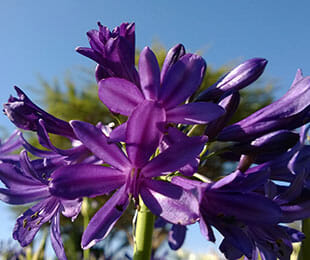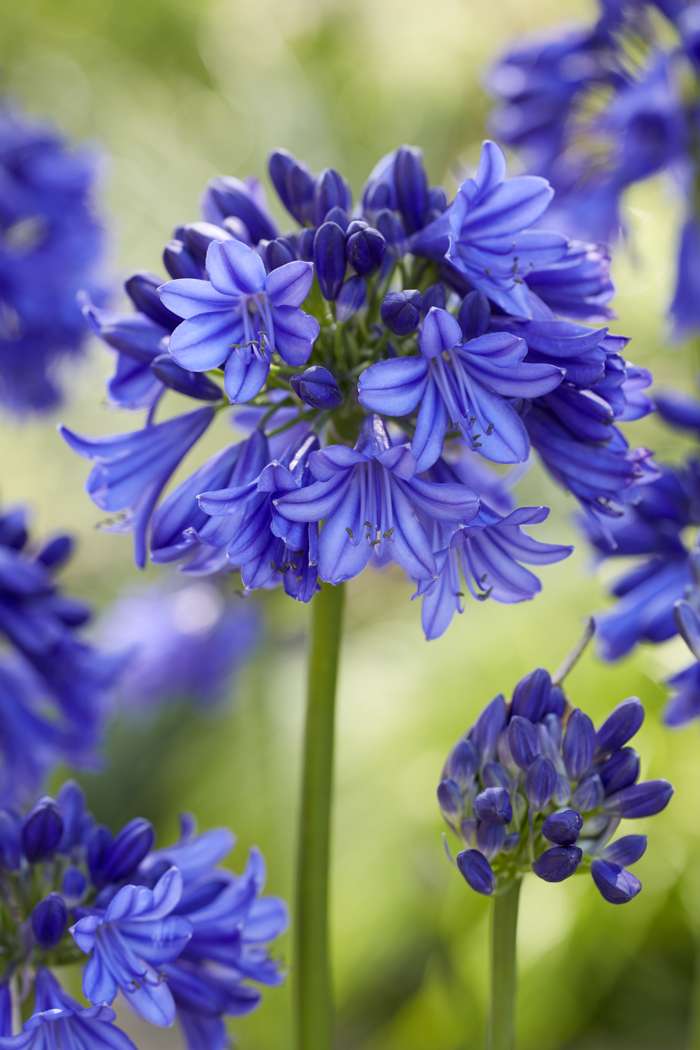Usual Agapanthus Issues and Just How to Fix Them
Usual Agapanthus Issues and Just How to Fix Them
Blog Article
Mastering the Art of Agapanthus Treatment: Essential Actions for Healthy Growth and Vivid Blooms
In the realm of horticulture, the growing of agapanthus stands as a gratifying endeavor for those who seek to support these elegant flowering plants. With their striking flowers and stylish foliage, agapanthus has recorded the attention of garden enthusiasts worldwide. However, achieving optimal growth and vivid blooms requires a nuanced method that incorporates numerous important actions. From selecting the best range to grasping trimming strategies, the trip towards growing flourishing agapanthus plants is complex and holds the vital to opening the full potential of these botanical treasures.

Selecting the Right Agapanthus Range

When picking the appropriate Agapanthus variety for your garden, consider elements such as environment viability, blossom color, and development routine. Agapanthus, generally known as Lily of the Nile or African lily, can be found in a variety of shades ranging from shades of purple and blue to white. Choose a blossom color that enhances your existing garden scheme to develop an unified landscape. In addition, take into consideration the climate in your area to make sure the Agapanthus variety you select can thrive in your certain problems. Some ranges are much more forgiving of cool temperatures, while others choose warmer climates. Recognizing the growth practice of different Agapanthus ranges is important for appropriate positioning within your yard. Some selections have a clumping development routine, ideal for containers or borders, while others have a more dispersing nature, appropriate for ground cover or mass growings. By very carefully assessing these variables, you can select the excellent Agapanthus selection to enhance the appeal of your garden.
Suitable Growing Problems
Considering the optimal ecological requirements is crucial for successful Agapanthus cultivation. Agapanthus plants are sensitive to cool temperature levels and ought to be safeguarded from frost throughout winter season months.
To make certain healthy development and dynamic blossoms, plant Agapanthus light bulbs at a depth of about 2-4 inches and area them 8-12 inches apart. Mulching around the base of the plants assists retain wetness and suppresses weed growth.
Watering and Feeding Tips
Maintaining appropriate dampness degrees and supplying vital nutrients are crucial elements in the care program for Agapanthus plants. When it comes to sprinkling Agapanthus, it is important to strike an equilibrium. These plants prefer regularly damp dirt but are at risk to root rot if overwatered.
Feeding Agapanthus is essential for promoting healthy and balanced growth and prolific blossoms. Use a well balanced fertilizer, such as a 10-10-10 formula, in the very early spring as new growth emerges. Repeat this application every 6-8 weeks throughout the growing season. Stay clear of excessive fertilization, as it can cause lavish foliage at the cost of blooms. Always follow the supplier's directions for proper dilution and application techniques. By following these watering and feeding suggestions, you can guarantee your Agapanthus plants thrive and create vibrant, long-lasting blossoms.
Pruning Methods for Agapanthus
Trimming Agapanthus plants at the suitable times and with correct techniques is important for preserving their health and wellness and advertising optimum growth and blooming. The perfect time to trim Agapanthus is in late Extra resources winter or very early springtime prior to new growth emerges. Start by removing any type of dead or yellowing leaves near the base of the plant. Cut them as short as possible without damaging the arising shoots.
Deadheading invested blossoms can additionally redirect the plant's energy into producing even more flowers instead than setting seeds. If you desire to accumulate seeds for proliferation, leave some blossoms to mature and dry on the plant.
Keep in mind to utilize clean, sharp tools to make precise cuts and minimize the risk of introducing diseases. Agapanthus. Regular trimming will assist keep your Agapanthus looking cool and healthy and balanced while guaranteeing a bountiful display screen of beautiful blooms
Dealing With Common Insects and Conditions
After making sure proper pruning strategies for Agapanthus, it is essential to deal with typical bugs and conditions that can affect the wellness and vitality click reference of these plants. One usual parasite that influences Agapanthus is the Agapanthus gall midget.
Additionally, Agapanthus plants can experience from root rot if they are grown in improperly draining pipes soil. By being alert and taking prompt activity against pests and diseases, you can help your Agapanthus plants prosper and generate vivid blossoms. Agapanthus.

Final Thought
Finally, grasping the art of agapanthus treatment entails picking the appropriate variety, giving excellent growing problems, appropriate watering and feeding, proper trimming techniques, and dealing with common pests and illness. By complying with these important actions, you can make certain healthy growth and vivid blossoms for your agapanthus plants. Bear in mind to on a regular basis monitor and keep your plants to advertise their total well-being and longevity.
To make certain healthy and balanced development and read this post here lively flowers, plant Agapanthus light bulbs at a deepness of about 2-4 inches and room them 8-12 inches apart. By complying with these watering and fertilizing suggestions, you can ensure your Agapanthus plants flourish and produce dynamic, durable blooms.
One usual pest that affects Agapanthus is the Agapanthus gall midge. In addition, Agapanthus plants can endure from origin rot if they are planted in badly draining pipes soil. By adhering to these crucial actions, you can make sure healthy and balanced development and vivid flowers for your agapanthus plants.
Report this page